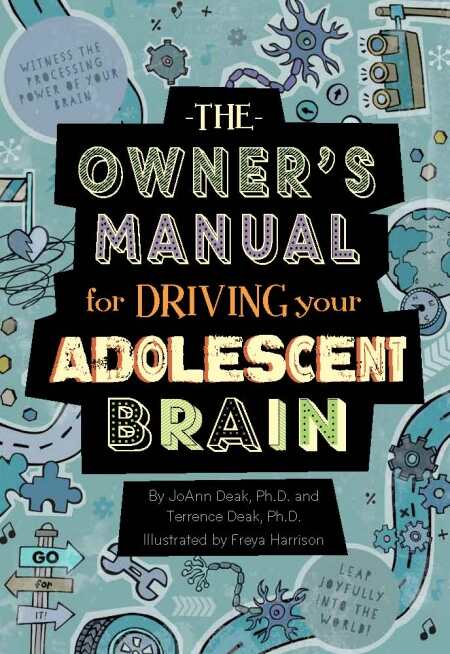The Owner's Manual for Driving Your Adolescent Brain
This owner’s manual lets teens kick the tires as they learn to drive their new-model brains.
The Owner’s Manual for Driving Your Adolescent Brain offers fun-filled, easy-to-understand information about how the brain works, grows, and develops to help young people successfully navigate through the challenging years from ages ten to twenty.
Adolescence is a highly dynamic developmental period, and the brain is the body’s most dynamic, and mysterious, organ. Psychologists JoAnn and Terrence Deak use ordinary concepts and language along with scientific terms to explain the various parts of the brain and how they interact with each other, using an analogy that many adolescents understand: the way a car works and the care it needs to operate at its best.
Freya Harrison’s lively, colorful illustrations add a touch of whimsy that greatly enhances the text, and fun science facts keep the reader enjoyably engaged. For example, did you know that if the cell body of a single neuron in your spinal cord that is about one hundred microns in diameter (about the size of a pinhead) were the size of a baseball, its axon would be nearly 2,416 feet long? That’s “eight times as tall as the Statue of Liberty, twice as tall as the Eiffel Tower, and almost as high as the tallest skyscraper on Earth.”
The Deaks also tackle some of the more troublesome aspects of adolescence, including the strong, and sometimes misguided, drive for independence and the emotional turbulence that characterize this time of life. Understanding that the brain’s different structures develop and mature at different rates, with the cerebral cortex (which participates in complex decision-making) not fully developed until adulthood, can help teens appreciate why they may need guidance from mature adults when it comes to making important decisions.
Learning that regular exercise supercharges the brain might lead even the most sedentary teen to frequent the gym or take up a sport. And understanding that, until the prefrontal cortex is fully mature, young people will have the tendency to act impulsively or engage in risky behaviors may help to protect them from making and acting upon some bad decisions; they may even find it easier to ask the advice of a trusted adult before their immature brain leads them astray. While geared to adolescents, parents and other adults who work with youth may find much to appreciate and enjoy in this manual on the care of their charges’ “grey matter.”
JoAnn Deak is an educator and preventive psychologist. Terrence Deak is a professor of Psychology and Behavioral Neuroscience at Binghamton University in upstate New York, where he runs an active neuroscience laboratory.
The authors make it clear that, no matter which types of life decisions adolescents must face, the choice always remains in their own hands. This respectful acknowledgment, together with the admission that making good decisions isn’t always easy, can help young people understand, and accept, both their limitations and their power.
Reviewed by
Kristine Morris
Disclosure: This article is not an endorsement, but a review. The publisher of this book provided free copies of the book and paid a small fee to have their book reviewed by a professional reviewer. Foreword Reviews and Clarion Reviews make no guarantee that the publisher will receive a positive review. Foreword Magazine, Inc. is disclosing this in accordance with the Federal Trade Commission’s 16 CFR, Part 255.

